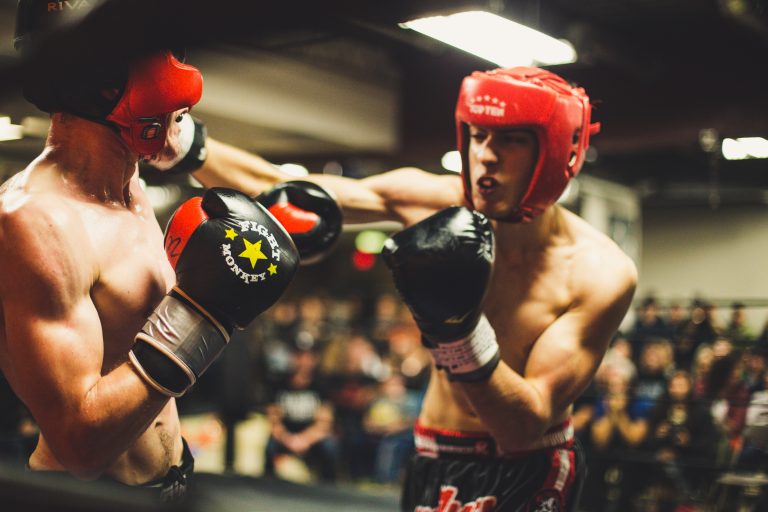The 10 Most Important Karate Bases for Beginners
Are you a beginner looking to learn karate? Karate is a martial art that focuses on self-defense, discipline, and physical fitness. But before you can dive into the more advanced practices, it’s essential to master the key bases. Here are 10 essential karate bases that every beginner should know.
1. Stance
The stance is one of the most critical aspects of karate. It is the foundation of every movement you perform. A proper stance helps you maintain balance, stability, and power. It is crucial to learn different types of stances in karate, such as front, back, horse, and cat stances.
2. Footwork
Footwork is an essential base of karate that involves the movement and positioning of your feet. The efficiency and speed of your footwork depend on your stances. Moving your feet in different directions and patterns helps you evade attacks and execute counter-moves quickly.
3. Blocking
Blocking is a crucial base in karate. It is the act of stopping or deflecting an attack from an opponent. Your blocking technique should be powerful and well-timed to avoid injuries. Some of the common blocking techniques in karate include inward, outward, low, and high blocks.
4. Striking
Striking involves hitting an opponent with different parts of your body. You should learn various striking techniques in karate, such as punches, kicks, elbows, and knees. Proper execution of striking techniques can cause significant damage to your opponent.
5. Focus
Focus is required in karate to execute movements with precision and accuracy. It’s essential to maintain mental focus and concentration while performing karate movements to avoid injuries.
6. Timing
Timing is an essential aspect of karate, as a well-timed movement can have a more substantial impact on the opponent. You should time your movements correctly to execute counter-attacks effectively.
7. Breathing
Breathing is an essential aspect of karate. You should learn to control your breathing to maintain focus and energy during the practice. Proper breathing also helps in relaxing and releasing stress.
8. Grappling
Grappling involves controlling and immobilizing an opponent through holding, locking, or throwing techniques. Proper execution of grappling techniques can help you immobilize an opponent with relative ease.
9. Kata
Kata is the solo practice of karate that involves performing a series of movements in a pre-defined sequence. This practice helps beginners learn the techniques and movements of karate in a structured and organized manner.
10. Mindset
Lastly, the right mindset is essential to succeed in karate. You need to have a strong will, discipline, and perseverance to overcome any physical and mental barriers that you may encounter during the practice.
In conclusion, these ten bases of karate are crucial for beginners. None of these bases is more important than the other, and it’s crucial to give equal attention to all of them. With regular practice and dedication, you can master these bases and become a proficient karate practitioner.
The 10 Most Important Karate Bases for Beginners
Karate is a martial art that originated from Japan and has become popular all around the world. It involves a combination of striking techniques, kicks, punches, and various forms of blocks. Karate is known for its emphasis on discipline, control, and respect which can help people develop self-confidence and physical fitness. Starting out in any new hobby or sport can be daunting, so we’ve put together some of the most frequently asked questions about the 10 most important karate bases for beginners.
What are Karate Bases?
Karate bases are the fundamental stances that provide a strong foundation for all the movements and techniques involved in Karate. They are designed to give practitioners a stable and balanced position from which they can deliver powerful strikes, blocks, and kicks.
What are the 10 Most Important Karate Bases for Beginners?
The 10 most important karate bases for beginners are:
1. Shizentai (Natural stance)
2. Heiko dachi (Parallel stance)
3. Zenkutsu dachi (Forward stance)
4. Kokutsu dachi (Backward stance)
5. Kiba dachi (Horse stance)
6. Neko ashi dachi (Cat foot stance)
7. Sanchin dachi (Hourglass stance)
8. Hangetsu dachi (Half-moon stance)
9. Fudo dachi (Immovable stance)
10. Sagi ashi dachi (Heron stance)
1. Shizentai (Natural stance)
The shizentai is also known as the natural stance since it is the most neutral and relaxed stance in karate. This base consists of standing upright with your feet shoulder-width apart and your arms hanging loosely at your sides. This stance is essential in developing balance, stability, and coordination.
2. Heiko dachi (Parallel stance)
The Heiko dachi, also known as the parallel stance, is done by standing with your feet parallel to each other, shoulder-width apart. This position is great for practicing basic techniques such as punches and blocks. This stance is also useful in developing hip flexibility and coordination between both legs.
3. Zenkutsu dachi (Forward stance)
The Zenkutsu dachi, also known as the forward stance, is one of the most important stances in Karate. It involves placing your front foot about a shoulder-width distance away from your back foot with your knees bent, facing forward. This position is used for delivering powerful strikes and can help develop leg strength and endurance.
4. Kokutsu dachi (Backward stance)
The Kokutsu dachi, also known as the backward stance, is a defensive stance used primarily for blocking or evading attacks. In this base, the practitioner steps back with their back leg, aligning with the front heel, with both legs bent. This stance emphasizes rooting and balance to deliver a powerful counterattack.
5. Kiba dachi (Horse stance)
The Kiba dachi, also known as the horse stance, involves standing with your feet wider than your shoulder-width, with your toes pointed outward. This stance is effective for generating power from the ground and is used for lower body techniques, such as kicks and sweeps.
6. Neko ashi dachi (Cat foot stance)
The Neko ashi dachi, also known as the cat foot stance, is often used in Karate katas (a sequence of moves) and involves standing with the back foot pointing inward and heel raised off the ground. The front foot is positioned normally, with toes pointed outward. This base emphasizes the importance of weight distribution and balance.
7. Sanchin dachi (Hourglass stance)
The Sanchin dachi, also known as the hourglass stance, is a powerful stance that focuses on developing endurance and strengthening of internal organs. In this stance, both feet are shoulder-width apart, with toes pointing inwards, and the knees slightly bent. This base emphasizes breath control and stability to deliver powerful and stable strikes.
8. Hangetsu dachi (Half-moon stance)
The Hangetsu dachi, also known as the half-moon stance, is used for fast and swift movements. This stance involves taking a small step forward with one foot while maintaining a wide stance, then bending both knees. The back foot can remain straight or turned out slightly. This stance is particularly useful for quick changes in direction or dodging attacks.
9. Fudo dachi (Immovable stance)
The Fudo dachi, also known as the immovable stance, is used for developing stability and grounding oneself. In this stance, the feet are shoulder-width apart, with the knees slightly bent, and the weight evenly distributed between both legs. This stance teaches practitioners to be immovable and grounded while being able to move in any direction quickly.
10. Sagi ashi dachi (Heron stance)
The Sagi ashi dachi, also known as the heron stance, is often used in Karate katas and involves standing on one foot while the other foot is lifted and held in front of the body. This base emphasizes the importance of balance, coordination, and body control.
What are Some Tips for Practicing Karate Bases?
– Make sure that you are centered and balanced before beginning any movements
– Keep your knees bent to maintain stability and avoid injury
– Maintain eye contact with your opponent and keep a steady breathing rhythm
– Practice your bases in slow motion, focusing on proper form and technique
– Always practice with a partner or under a professional’s guidance to ensure safety and maximized effectiveness
Conclusion
In conclusion, the 10 most important karate bases for beginners provide a solid foundation for all Karate techniques. By practicing these stances regularly, you can develop balance, coordination, strength, and personal discipline. Remember that Karate is not just about physical power but also about self-discipline and respect towards others. Always train with a positive attitude and respect your opponent to make the most out of your Karate practice.
Inhaltsverzeichnis






